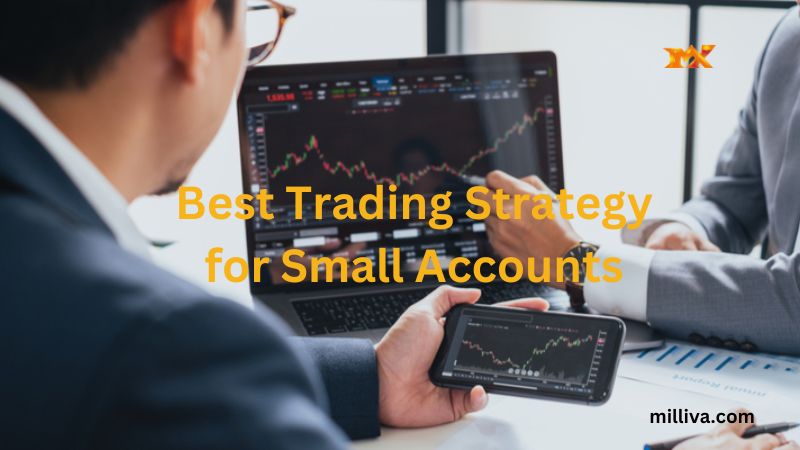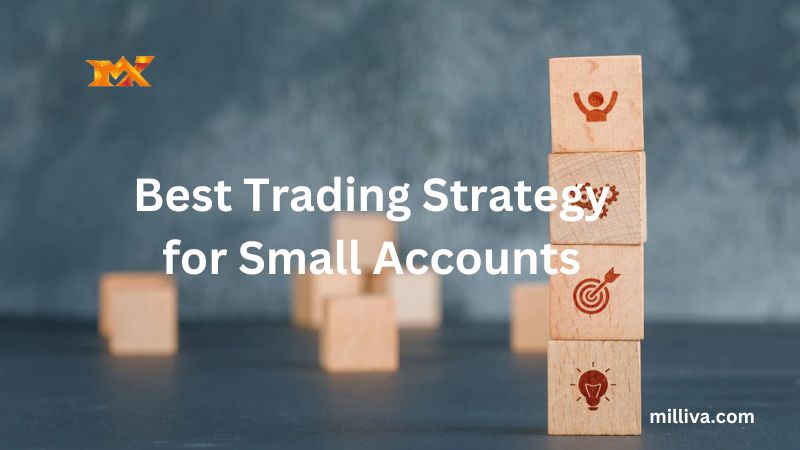Best Trading Strategy for Small Accounts

![]()
Every trader wants to trade a well-funded trading account, but very few of get to do that. Most of the traders will stuck with trading relatively small accounts or those that are just covering the required margin. Strict risk and money management is require to trade small accounts, because there is no buffer against mistakes or any unexpected losses. In this blog let’s see about best trading strategy for small accounts.
Those who don’t want to trade with a million-dollar account, but covering just the basic required margin doesn’t give this luxury. It doesn’t mean that small trades are not sufficient. Simply trading in small accounts would need a trader to be quite discipline and strict about money management.
Trading Small Account
You will not have a lot of room for error if you are going to be trading with a small account. Entries will be key for managing your risk so be patient and pick the best possible spots to get in. your goal is to protect your capital and take profits when you can. It will be a grind but as you grow your account you will allow yourself more of a cushion to take more risk on.
You should be very patient while waiting for your setup to evolve and trigger a buy or sell signal in a small account. you should also need you should also need to know when to jump out of a trade and trim your losses before they mount. Which means you need to learn how you to use a stop loss order and a popular profit-taking strategies that are used by day traders.
Best Trading Strategy for Small Accounts
Rigorous risk management is the best strategy for trading small accounts, a low number of trades, and leverage that allows small account trades to trade markets that they cannot trade using cash. With a small account, day trading becomes stringent as a trader cannot afford too much unpredictability and losses. Small account traders should trade the best analysed trades, avoiding any overtrading and unnecessary experimentation with live accounts trading systems.
The best trading strategy for small accounts should be based on the percentage increase or decrease in position size based on profitability. Whether the trading account is small or large, trading rules should not be changed. For example, if you have $500 in your margin account, you have to be careful that your loss does not exceed it. If your loss exceeds it, you may not be able to trade at all until you deposit the additional margin requirement.
Day traders who manage millions of dollars’ account risk very often 0.5% per trade. Small account retail trader has responsibility, do not operate with other people’s money, and can easily cover huge drawdown.
Use Leverage
Traders cannot use large amounts in small accounts; thus leveraging is the best way. For normal trade, a trader might need to have at least 25-30 percent of cash for the total volume of trade. But if the trader chooses the underlying market like the options market or the warrants markets, the margin requirement falls to around 15% of the total volume of trade.
It is recommended for small traders to understand the basic concepts of leverage and margin requirements. Avoid using leverage in the beginning if you are new to the field. Most of the investors use leverage positions mainly for reducing the margin requirements.
Be Conservative in Your Trading
Unlike large traders, small account day trading does not have the luxury of taking high risks. So a small trader needs to be conservative in trading. You should look closely at the reward risk ratio as a small day trader. It would, in the long run, would result much profitable than randomly trading.
Use One Percent Risk Management Rule
For small traders, trading using the one percent risk rule proves the same as a buffer for the mistakes and losses, just like a large trading account. Many traders use this strategy to manage the risk effectively regardless of the size of their trades.
How do You Grow a Small Account?
To grow in a small account profitable trading is one of the way, but if you are being conservative and adhering to the 1% risk rule, then the growth may occur more gradually than you would like. You can take higher risk or reward trade, but then you would expose yourself to the possibility of completely wiping out your account.
Many traders with a small account will find that they need external source of income in addition to trade such as a day job to build meaningful capital. Simply in small trading accounts there is no room for trail or experimenting so they have to trade only the best setups. The properly managed risk where the maximum risk is 1% to 3% per trade. Each trade needs to be planned patiently, should avoid overtrading. The trading rules for small account and a large account can be the same, but the strategy needs to be tested before trading in live accounts.

Day Trading for a Small Account
Compared to large trading account small trading account will be difficult to trade. Large accounts can handle mistakes, unexpected losses, and even bad trades, but small accounts are not able to handle these. Day trading for small accounts can lead to overtrading and huge loss, so traders need to trade only proven strategies from 1 to 3 trades per day.
Small accounts cannot trade in all markets, they have to choose markets with low margins and stocks having small tick prices. Small trading accounts also don’t have the flexibility to trade multiple contracts or use multiple accounts. There are only limited strategies for small accounts, but using them appropriately can definitely help small traders gain a considerable amount of profit.
Constraints of Small Traders
Trading in a small account might impact traders to feel that they have relatively low market opportunities. It involves the psychological pressure to be profitable as well. For instance, as a trader, Lucky knows that she has limited margins; if she loses one more trade, she won’t trade for the time she deposits the required margin.
This can lead to the pressure of being profitable and often result in being too emotional while trading. Confidence and fierce is one of the best trading strategies for small account traders. Winning or losing trades depends on many factors, and it is natural.
Final Thoughts
If you are a small trader, you do not feel that you cannot trade successfully; it is more like art. You get more experience and risk management techniques than big traders, which you can eventually utilize to earn big profits. If you implement the trading strategies effectively, there is no need for you to feel left out. You should keep yourself composed and control the unnecessary pressure. Learn from your mistakes, and educate yourself. Even with a small trading account you can do wonders by practice and persistence. From this blog you may got some idea about best trading strategy for small accounts.

Visit us on: www.milliva.com





